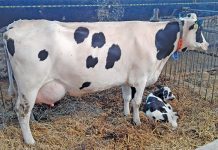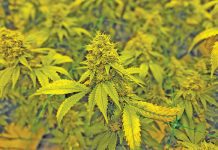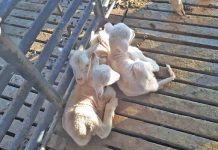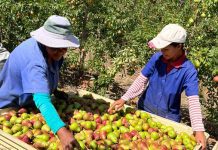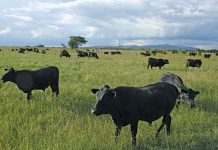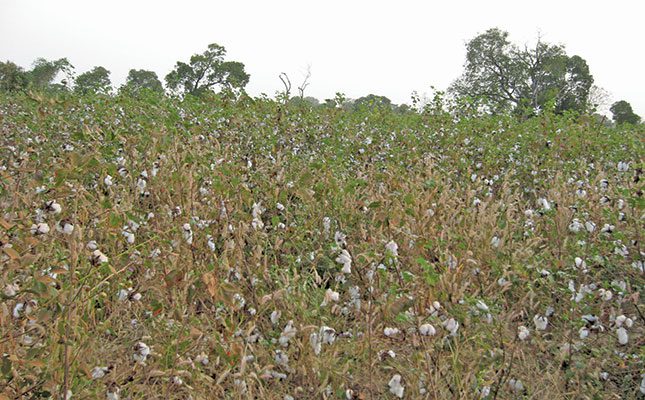
Photo: Wikimedia Commons
Senegal is located in the drought-prone Sahel region of West Africa, and has a population of roughly 17 million people. Despite unfavourable weather conditions for agricultural production, around 77% of Senegal’s working population is employed in the sector, which contributes around 15% to the country’s gross domestic product (GDP).
Senegalese agriculture is dominated by dryland production, with only around 5% of land under irrigation, and most of the country’s producers are subsistence or small-scale farmers.
The primary food crops grown in Senegal include millet, rice, maize and sorghum. Cash crops grown there include groundnuts, sugar cane and cotton; and horticultural crops include melons, mangoes, green beans and tomatoes.
Despite this wide variety of crops under production, Senegal remains a net importer of agricultural products, importing around 70% of its demand. Top imports include rice, wheat, maize, palm oil, sugar, potatoes and onions.
The Casamance region is the country’s most important for agricultural production, but a lack of infrastructure is hampering its expansion.
Senegal exports gum arabic, and artisanal fishing, mainly for the local processing market, is one of the country’s most important economic resources and earners of foreign exchange.
Fishing
Senegal’s coastline is around 530km in length, and its fishing industry is an important earner in the extended agriculture sector.
Industrial fishing includes sardines, tuna, and the trawler harvesting of shrimp, sole and cuttlefish. Artisanal fishing remains the most important segment of this industry, however, with seafood bought by local factories for processing.
The fishing industry accounts for 3,2% of the country’s GDP, 10% of Senegal’s total exports, and 17% of its employment. The primary and secondary fishing industries employ around 600 000. Seafood is also an important staple in the diets of Senegalese people.
In 2005, seafood products represented 22% of Senegal’s total exports and generated more than US$366 million (about R2,3 billion). According to the US Department of Agriculture (USDA), this increased to US$400 million in 2021 (R6,4 billion).
The EU is the largest market for Senegal’s seafood exports. A sustainable fisheries partnership agreement (SFPA) was signed between Senegal and the EU to allow EU trawlers, fishing boats and ships to fish along Senegal’s coastline. The deal allows the EU to catch around 10 000t of tuna and 1 750t of hake per year.
The first agreement was signed in November 2014, and was set to be renewed at five-year intervals. However, in 2022 it was reported that Senegal would not be issuing new licences in relation to this agreement, following warnings about the depletion of fish and threats to biodiversity.
Concerns about the overexploitation of high-value fish and the declining incomes of local fishers have also resulted in the expiration of similar SFPAs.
Despite this, local fishers and processing companies are still struggling, with high production costs and a declining population of high-value fish weighing on the local fleet.
Gum Arabic
Gum arabic is exudate from Acacia trees. The gum seeps from cracks in the bark of the trees, mainly during the dry season in Senegal, where the Acacia senegal species is used.
Gum arabic is an oil-in-water emulsifier used in photography, traditional medicine, and the production of soft drinks, pharmaceuticals, food, and laundry starch.
According to Mujawamariya (2012), in the 1950s, Senegal accounted for 10% of the world’s gum arabic exports. In 2008, this had dropped to 5% on the back of low production that was the result of poor rainfall and prolonged droughts.
Apart from its primary uses, gum arabic is an important secondary industry for livestock and crop production. For example, the collection of gum arabic allows farmers to diversify their operations. The proceeds from gum arabic production can help them to rebuild livestock herds and flocks, and to compensate for the loss of income in the case of crop failures.
The wood of the A. senegal can also be used in roofing poles and for the lining of wells at the end of the tree’s gum-production life cycle, which lasts around 15 to 25 years.
Barriers to production and trade
Mujawamariya writes that the main challenge to collecting the gum in Senegal is that forests where A. senegal is found are primarily community/open-access zones, which make the enforcement of ownership rights and use of the trees difficult.
“These forests are located at long distances from villages, not easily accessible and insecure due to human or animal attacks. Due to unclear property rights, cases of theft are frequent where, after tapping, the gum is [collected] by another person. Such cases may even lead to conflicts, [which can lead to] forest degradation,” she says.
Bush fires are reportedly another major issue. Low prices, difficulties in reaching the market, and a lack of buyers are also challenges to the expansion of the industry.
“Due to low quantities bought each year, traders’ strategies are to restrict their area of operation to accessible zones in order to reduce transportation costs. Producers in other locations may therefore have no access to the market, [and] they are compelled to accept the low prices offered by local traders,” adds Mujawamariya.
Yet another problem is quality, which is affected when gum is harvested before it has matured enough. Quality may also be impacted by insufficient cleaning of the gum after harvesting to remove impurities, such as bark or dust.
“The supply chain is not sufficiently developed to pay collectors according to the quality of the gum supplied. They are currently only paid on quantity, hence there is little incentive for them to present cleaner gum or to grade the gum,” explains Mujawamariya.
Groundnuts
Groundnuts are produced on around two million hectares, and are an important cash crop in Senegal, with the sector employing as many as one million people.
Groundnuts are processed locally, and prices of the processed oil and other groundnut products are set by a government-controlled commission. Senegal exports most of its groundnuts to the EU.
Gro Intelligence says: “Senegal has a ‘groundnut basin’ in which most of the country’s crop is grown. The basin covers a large swathe of central and western Senegal, north of Gambia. This area is large indeed: in 2010, over 40% of land under harvest was dedicated to the cultivation of groundnuts.
“Groundnuts typically require between 500mm and 700mm of rain to achieve good yields. Senegalese droughts, which are not uncommon, have devastated production levels in the past.”
One of the major challenges to groundnut production in Senegal, and one of the reasons for the drop in production since the 1960s, is low yields. “Yields have actually declined since peak production five decades ago: in the first decade of the 2000s, yields were 13% lower than they were in the 1960s.
“This decline is happening in a context in which yields for groundnuts and most other crops in most parts of the world are increasing,” explains Gro Intelligence. Poor yields can also be attributed to flooding.
The Aspergillus fungus is also a problem for the expansion of Senegal’s groundnut market, and urgent intervention and mitigation strategies are required, adds Gro Intelligence.
Cotton
Cotton is a critical export cash crop for Senegal, and accounts for around 16% of agricultural exports, and around 3% of total exports. It is grown in nearly every region and covers almost one-third of cultivated land.
The Velingara region accounts for 47% of production, followed by Tambacounda/Kahone (20%), Kolda (18%) and Kédougou (13%).
According to the USDA, cotton production in Senegal in 2022/23 is projected to rise by 7% to 45 000 bales compared with the previous season, with around 20 000ha planted to the crop, up 11% from the 2021/22 season.
Production has declined significantly over the past few years due to the instability of the global cotton price, and competition from regions with highly mechanised production systems, says Invest for Jobs.
“A lack of rainfall has also served to reduce harvest yields, thereby driving up prices for Senegalese cotton. Senegal currently only produces 20% of the estimated 60 000t of cotton it is capable of producing each year,” it adds.
Sources:

